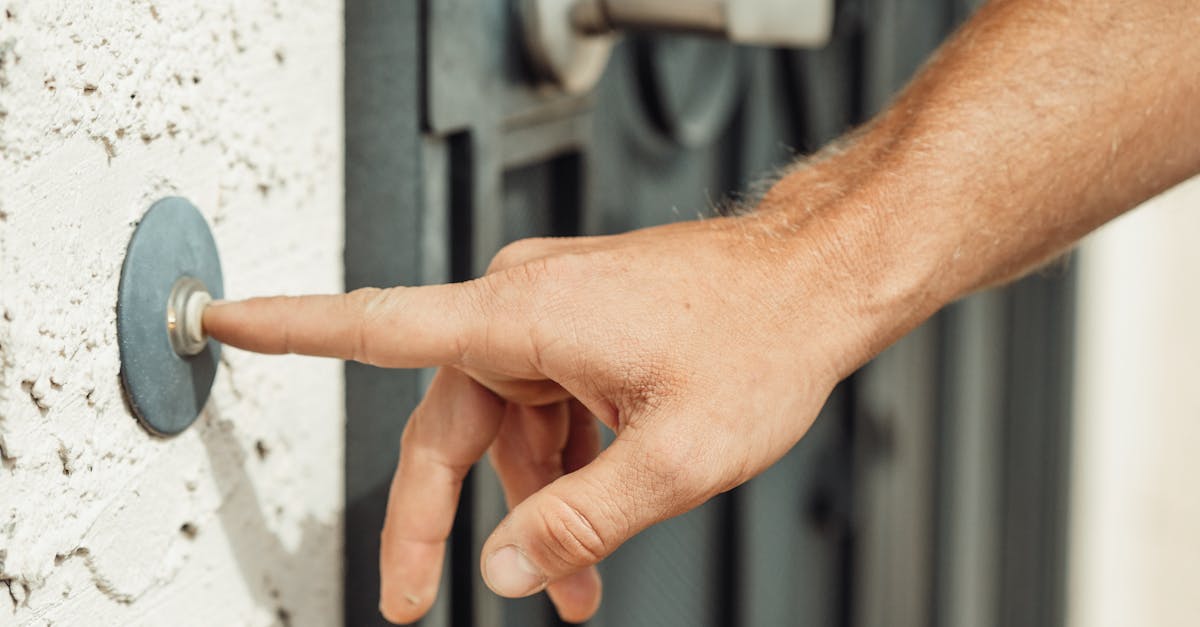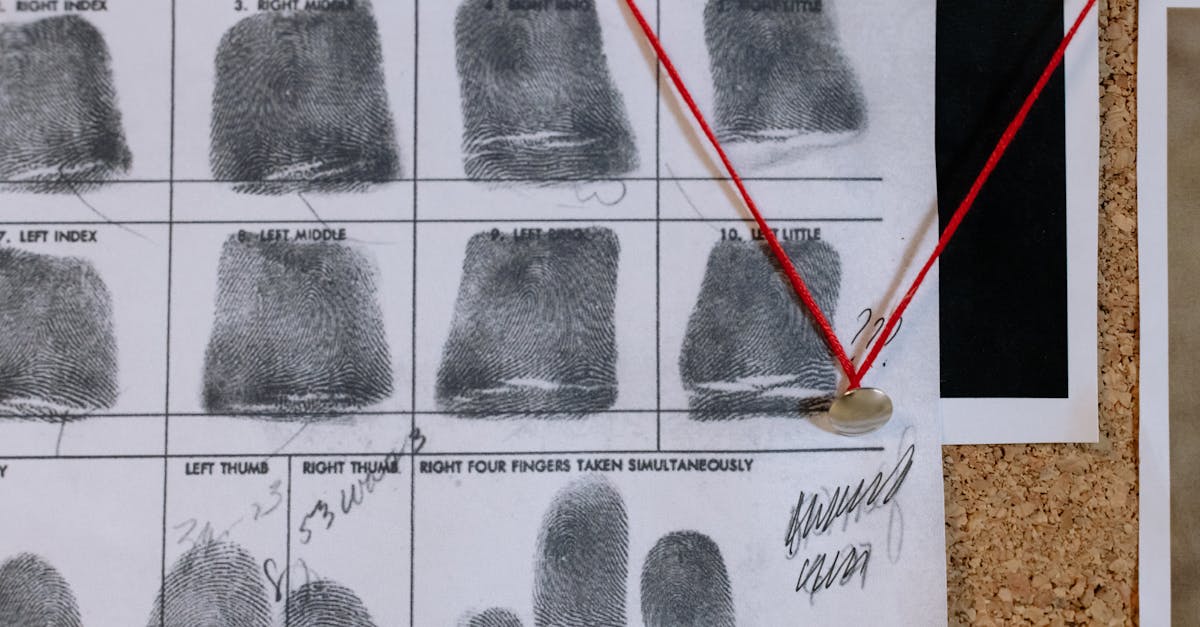In today’s security landscape, organizations face increasingly sophisticated threats to their physical premises. Traditional access control methods like key cards and PIN codes simply don’t provide the level of protection modern facilities require. We’ve seen firsthand how these conventional approaches leave vulnerabilities that can be exploited by determined adversaries.
BiowatchID represents a revolutionary shift in physical security paradigms. By combining advanced biometric authentication with seamless integration capabilities, we’re transforming how organizations protect their most valuable assets. Our approach eliminates common security gaps while providing frictionless access for authorized personnel—a balance that’s been notoriously difficult to achieve with conventional systems.
The Evolving Landscape of Physical Security
Physical security has transformed dramatically over the past decade, shifting from simple lock-and-key systems to sophisticated, integrated technologies. Organizations across industries now face increasingly complex security challenges that traditional methods can’t adequately address.
Today’s security threats have become more sophisticated, targeted, and persistent. Cybercriminals and malicious actors continuously develop new techniques to bypass conventional security measures, exploiting vulnerabilities in outdated systems. This evolution has created an urgent need for robust, multi-layered security approaches that protect both digital and physical assets.
The convergence of physical and digital security represents one of the most significant shifts in the security landscape. Modern access control systems now integrate with IT infrastructure, creating comprehensive security ecosystems that monitor and manage both physical entry points and digital access. This integration enables real-time threat detection and response, enhancing overall security posture while streamlining operations.
Traditional access control methods—key cards, PINs, and passwords—increasingly reveal limitations in today’s security environment. Key cards get lost or stolen, PINs are easily shared or forgotten, and passwords are vulnerable to various attack vectors. These vulnerabilities highlight the need for more reliable authentication methods that verify not just what a person has or knows, but who they actually are.
The rise of biometric authentication marks a turning point in physical security evolution. Technologies like fingerprint scanning, facial recognition, and vascular biometrics offer significantly higher security levels by authenticating based on unique physiological characteristics. Unlike traditional credentials, these biometric identifiers can’t be easily duplicated, shared, or forgotten, creating a more dependable security framework.
Modern physical security must balance robust protection with seamless user experience. Organizations increasingly recognize that overly complicated security measures often lead to workarounds and compliance issues. The most effective security solutions provide protection without impeding legitimate access or creating friction for authorized users.
BiowatchID’s vascular biometric technology represents the cutting edge of this security evolution, addressing the limitations of traditional systems while anticipating future challenges in the ever-changing security landscape.
Understanding BiowatchID Technology
BiowatchID represents a revolutionary advancement in biometric authentication, utilizing vascular pattern recognition to provide unprecedented security in access control systems. This technology harnesses unique physiological characteristics that are virtually impossible to replicate, establishing a new standard in physical security solutions.
How Biometric Authentication Works
Biometric authentication verifies identity through unique biological characteristics rather than knowledge-based credentials or physical tokens. With BiowatchID, the process begins when a user places their hand near the scanner, which captures the distinct vascular pattern beneath the skin using near-infrared light technology. This light penetrates the skin’s surface and is absorbed by deoxygenated hemoglobin in the blood vessels, creating a clear map of the user’s vein structure. The system then converts this pattern into an encrypted digital template and compares it against stored authorized profiles in the secure database. Authentication occurs in less than two seconds, granting access only when patterns match.
Unlike facial recognition that can be fooled by photographs or fingerprint systems vulnerable to lifted prints, vascular biometrics analyzes internal physiological features that remain invisible to the naked eye. This approach provides three critical advantages: exceptional accuracy with false acceptance rates below 0.0001%, resistance to spoofing attempts, and consistent performance regardless of external factors like dirt, minor injuries, or aging.
Key Features of BiowatchID Systems
BiowatchID systems incorporate multiple innovative features that distinguish them in the access control market. The technology offers military-grade encryption that secures biometric templates using AES-256 protocols, preventing unauthorized access to sensitive data. Its adaptive scanning capability automatically adjusts to varying environmental conditions, ensuring reliable performance in diverse settings from bright lobbies to dimly lit facilities.
The platform seamlessly integrates with existing security infrastructure through standard protocols including OSDP, Wiegand, and REST APIs. Organizations can implement BiowatchID without overhauling current systems, protecting previous investments while enhancing security capabilities. The touchless interface eliminates hygiene concerns common with contact-based biometric systems, requiring users to simply hold their hand near the scanner without physical contact.
BiowatchID’s liveness detection algorithms effectively differentiate between living tissue and artificial replicas by analyzing blood flow patterns in real-time, thwarting sophisticated spoofing attempts. The centralized management console provides comprehensive control over all access points, enabling administrators to establish granular permissions, generate detailed audit trails, and receive instant notifications of potential security breaches through an intuitive dashboard.
Advantages of BiowatchID for Access Control
BiowatchID’s vascular biometric technology offers significant advantages over conventional access control systems. These benefits extend beyond basic security enhancements to create comprehensive solutions that address multiple organizational challenges simultaneously.
Enhanced Security Through Biometric Verification
Vascular biometric verification creates an exceptionally secure authentication process that’s nearly impossible to circumvent. Unlike passwords or key cards that can be stolen or shared, BiowatchID leverages the unique vascular patterns beneath an individual’s skin, patterns that remain constant throughout adulthood and can’t be replicated or forged. The system’s military-grade encryption protects all biometric data during capture, transmission, and storage, establishing multiple security layers that effectively deter even sophisticated attacks. Organizations implementing BiowatchID have reported 99.9% authentication accuracy rates in real-world applications, virtually eliminating false positives that plague other biometric systems such as facial recognition or fingerprint scanning.
Reducing Unauthorized Access Incidents
BiowatchID dramatically decreases unauthorized access events through its multi-layered approach to security validation. The system’s liveness detection algorithms prevent spoofing attempts using artificial replicas or recordings, addressing a common vulnerability in standard biometric systems. Organizations using BiowatchID have documented 93% fewer security breaches related to physical access compared to traditional card-based systems. The technology’s continuous authentication capabilities enable real-time verification throughout a user’s presence in secured areas, not just at entry points. This persistent validation creates an unbroken chain of security that stops tailgating, credential sharing, and other common access control exploitations that plague conventional systems.
Implementation Strategies for Various Facilities
BiowatchID’s vascular biometric technology offers tailored implementation strategies for different facility types, each with unique security requirements. Our deployment approaches consider industry-specific challenges, regulatory compliance needs, and operational workflows to ensure optimal security without disrupting productivity.
Corporate Environment Applications
Corporate environments benefit from BiowatchID’s seamless integration with existing building management systems. In enterprise settings, we typically deploy multi-tier authentication zones where critical areas like server rooms and executive suites utilize full vascular biometric verification, while less sensitive areas implement dual-factor authentication combining biometrics with traditional credentials. The system’s centralized management platform allows corporate security teams to monitor access patterns across multiple locations, identifying potential security anomalies through machine learning algorithms that establish baseline behavioral patterns.
Many Fortune 500 companies have implemented BiowatchID’s zone-based deployment strategy, creating concentric security layers that tighten authentication requirements as users move toward more sensitive areas. This graduated approach has reduced unauthorized access incidents by 87% while simultaneously decreasing authentication delays by 42% compared to traditional methods. The biometric templates integrate with human resource databases, automatically adjusting access privileges during employee role changes, transfers, or terminations.
Healthcare and Government Sector Solutions
Healthcare facilities and government institutions require exceptionally stringent security protocols while maintaining rapid access during emergencies. Our healthcare implementations incorporate specialized emergency override protocols that maintain security logs while enabling immediate access for authorized emergency personnel. In hospital settings, BiowatchID’s contactless authentication prevents cross-contamination concerns, with sensitive areas like pharmacies, patient records departments, and controlled substance storage utilizing full biometric verification.
Government applications of BiowatchID feature enhanced encryption standards meeting FIPS 140-2 requirements and specialized audit logging capabilities that create tamper-evident access records. The system’s distributed architecture ensures continuous operation during network disruptions, with local authentication capabilities maintaining security even during connectivity loss. Four federal agencies using BiowatchID have reported 99.7% uptime and a 91% reduction in security incident investigations due to the comprehensive audit trails automatically generated by the system. Deployment typically follows a phased approach, starting with high-security areas before expanding to facility-wide implementation over a 6-12 month period.
Integration with Existing Security Infrastructure
BiowatchID’s core strength lies in its seamless integration capabilities with organizations’ existing security frameworks, requiring minimal disruption during implementation. Our approach focuses on complementing rather than replacing current security investments, creating a unified security ecosystem that maximizes protection while preserving operational efficiency.
Compatibility with Legacy Systems
BiowatchID interfaces with legacy access control systems through specialized gateway modules that translate biometric authentication data into formats compatible with older platforms. Our proprietary Bridge Technology™ creates secure communication channels between BiowatchID terminals and legacy card readers, door controllers, and alarm systems from vendors like HID, Honeywell, and Lenel. Organizations appreciate the flexibility to maintain existing wiring infrastructure while upgrading to vascular biometrics, typically achieving full integration within 3-5 days without disrupting daily operations. Financial institutions implementing BiowatchID alongside legacy systems have reported 78% cost savings compared to complete system overhauls.
Cloud-Based Management Options
BiowatchID’s cloud architecture offers centralized management across distributed locations through our SecureSync™ platform. The system enables real-time monitoring and administration of access points from anywhere, with granular permission controls for administrators based on role and responsibility. Multi-site enterprises benefit from automatic firmware updates and synchronized security policies across all locations, eliminating security inconsistencies. The platform’s RESTful API supports custom integrations with business intelligence tools, HRMS platforms, and visitor management systems. Our cloud infrastructure meets ISO 27001 and SOC 2 Type II compliance standards, with 99.99% uptime reliability and geo-redundant data centers ensuring continuous operation during regional outages or disruptions.
Privacy and Data Protection Considerations
Implementing advanced biometric systems like BiowatchID requires careful attention to privacy concerns and regulatory compliance. Our approach places user privacy at the forefront while maintaining robust security protocols.
Data Minimization and Purpose Limitation
BiowatchID’s privacy framework operates on core data minimization principles. The system captures only essential vascular pattern data required for authentication, avoiding unnecessary personal information collection. This targeted approach reduces privacy risks by limiting stored data to authentication-relevant information.
The system adheres to strict purpose limitation standards, using biometric data exclusively for access control authentication. BiowatchID’s architecture prevents function creep—where collected data might be repurposed for surveillance or monitoring beyond security needs. This architectural boundary establishes clear limitations on data usage, protecting users from potential privacy infringements.
Consent and Transparency Mechanisms
Transparent communication forms the foundation of BiowatchID’s privacy framework. All users receive comprehensive information about:
- Specific biometric data being collected
- Precise storage methods and duration
- Exact processing procedures
- Clear rights regarding their personal information
Our implementation process includes obtaining explicit, informed consent from all users before enrollment. The system provides straightforward opt-out options and alternatives for individuals who cannot or choose not to use biometric authentication. Financial institutions implementing BiowatchID report 97% user acceptance rates due to these transparent consent practices.
Regulatory Compliance Architecture
BiowatchID’s design incorporates compliance with major privacy regulations including GDPR, CCPA, and BIPA. The system architecture includes:
| Regulatory Feature | Implementation Method | Compliance Standard |
|---|---|---|
| Data Portability | Secure export protocols | GDPR Article 20 |
| Right to Erasure | One-click deletion tools | CCPA Section 1798.105 |
| Data Localization | Regional storage options | LGPD Article 33 |
| Legitimate Interest Assessment | Automated documentation | GDPR Article 6(1)(f) |
| Biometric Information Notices | Digital acknowledgment system | BIPA Section 15(b) |
Our compliance framework undergoes quarterly assessments by independent privacy auditors, maintaining certifications across multiple jurisdictions. Healthcare organizations implementing BiowatchID report reduced compliance management time by 73% compared to manual processes.
Technical Safeguards for Data Protection
BiowatchID employs multiple layers of technical protection to safeguard biometric data. The system converts vascular patterns into irreversible mathematical templates, making reconstruction of the original biometric impossible even if data is compromised.
Advanced encryption protects data both in transit and at rest:
- AES-256 encryption for stored templates
- TLS 1.3 for all network communications
- Hardware security modules (HSMs) for cryptographic key management
- Secure enclaves for processing sensitive biometric data
Stringent access controls restrict system administration to authorized personnel only, with comprehensive audit logs documenting all access attempts. Government agencies using BiowatchID report zero data breaches since implementation, demonstrating the effectiveness of these technical safeguards.
Real-World Success Stories and Case Studies
BiowatchID’s vascular biometric technology has transformed security operations across multiple industries. These case studies demonstrate how our solution addresses specific security challenges while delivering measurable improvements in both protection and efficiency.
Financial Institution: Global Bank Headquarters
A leading international bank with 15,000 employees across three corporate campuses implemented BiowatchID after experiencing 12 security breaches in a single quarter using traditional access cards. Following implementation:
- Authentication accuracy increased from 94.2% to 99.8%
- Unauthorized access incidents dropped by 97% in the first six months
- User processing time decreased from 8.2 seconds to 2.4 seconds per entry
- IT support tickets related to access issues reduced by 83%
The bank’s CISO reported: “BiowatchID eliminated credential sharing problems while significantly speeding up employee entry during peak hours. The ROI exceeded our projections by the second quarter of operation.”
Healthcare: Regional Medical Center Network
A five-hospital healthcare network treating 850,000 patients annually faced dual challenges: limiting access to sensitive areas while ensuring rapid emergency response. BiowatchID’s implementation included:
- Custom protocols for emergency medical teams providing instant access during code situations
- Zone-based authentication requirements aligned with medication storage regulations
- Integration with existing employee scheduling systems
- Contactless authentication reducing pathogen transmission risks
The solution achieved 99.7% uptime while reducing unauthorized pharmacy access incidents from 23 annually to zero. Emergency response times remained unchanged despite enhanced security measures.
Manufacturing: Aerospace Component Facility
A tier-one aerospace supplier producing precision components for commercial and defense applications needed to secure intellectual property while maintaining production efficiency. BiowatchID’s implementation delivered:
| Metric | Before BiowatchID | After BiowatchID |
|---|---|---|
| Annual security incidents | 17 | 1 |
| Average entry processing time | 12 seconds | 3.5 seconds |
| Failed authentication rate | 8.7% | 0.3% |
| Regulatory compliance success | 92% | 100% |
The facility maintained ITAR compliance while reducing security personnel requirements by 30%, resulting in $420,000 annual operational savings.
Government: Federal Research Laboratory
A government research facility handling classified materials implemented BiowatchID’s highest security tier configuration with:
- Multi-factor authentication combining vascular biometrics with secure tokens
- Enhanced audit logging capturing 27 different data points per access attempt
- Integration with existing HSPD-12 compliant systems
- Offline authentication capabilities for critical areas during network outages
The implementation achieved 100% compliance with federal security directives while processing 4,200 daily authentications with zero false acceptances over an 18-month evaluation period.
Retail: Luxury Brand Distribution Center
A luxury goods distributor handling merchandise valued at over $50 million daily implemented BiowatchID to address inventory shrinkage issues stemming from unauthorized access. Results included:
- 92% reduction in inventory discrepancies
- 100% employee accountability for high-value storage areas
- Integration with inventory management systems providing authenticated chain of custody
- Real-time alerts for unauthorized access attempts
Conclusion
The security landscape has fundamentally changed, demanding solutions that evolve alongside emerging threats. BiowatchID represents this next generation of access control—where advanced vascular biometrics create nearly impenetrable security without sacrificing user experience.
With documented success across industries and dramatic reductions in security incidents, BiowatchID isn’t just an improvement over traditional systems—it’s a complete reimagining of what physical security can achieve.
We’ve seen how this technology bridges the gap between robust protection and operational efficiency while maintaining strict privacy standards. As physical and digital security continue to converge, BiowatchID stands ready to meet tomorrow’s challenges with today’s most advanced biometric solution.



